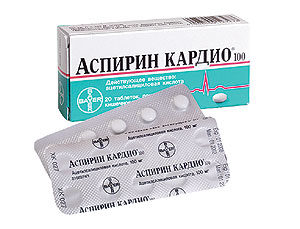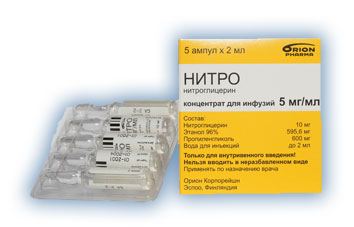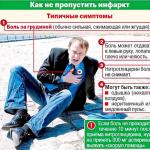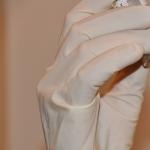The timeliness of pre-medical and emergency medical care for an attack of myocardial infarction in most cases is the key to a successful recovery of the patient. It is the lack of such events that often causes the death of even young people who have experienced this acute cardiac pathology. Cardiologists recommend that all patients with coronary artery disease know the rules for providing first aid. It is also important to know what treatment the patient will be prescribed in the hospital in order to prepare for a conversation with the attending physician and ask him the necessary and important questions.
When should first aid be started?

The answer to this question is always unequivocal - immediately. That is, already when the first signs of myocardial infarction began to appear in the patient. Its onset is signaled by such typical symptoms:
- intensive;
- irradiation of pain in the left arm, shoulder blade, teeth or neck area;
- severe weakness;
- fear of death and great anxiety;
- cold clammy sweat;
- nausea.
In atypical forms of a heart attack, the patient may experience other symptoms:
- stomach ache;
- digestive disorders;
- vomit;
- dyspnea;
- suffocation, etc.
First aid in such situations should begin with calling an ambulance. In a conversation with the dispatcher of this service, it is necessary to:
- report the patient's symptoms;
- express your assumption about the possibility of myocardial infarction;
- ask to send a team of cardiologists or resuscitators.
After that, you can begin to carry out those activities that can be performed outside the medical institution.
First aid

During the provision of first aid, the patient's condition may be complicated by such conditions:
- fainting;
- heart failure.
When fainting occurs, it is necessary to remain calm and ensure the normal functioning of the respiratory system. The patient must be given a horizontal position, a roller should be placed under the shoulders and dentures (if any) removed from the oral cavity. The head of the patient should be in a tilted position, and if there are signs of vomiting, it should be turned to one side.
In case of cardiac arrest, artificial respiration and chest compressions must be performed before the arrival of the medical team. The frequency of compressions on the midline of the chest (heart region) should be 75-80 per minute, and the frequency of blowing air into the airways (mouth or nose) should be about 2 breaths every 30 chest compressions.
Emergency medical care and principles of hospital treatment

Emergency medical care for myocardial infarction begins with the relief of acute pain. For this, various analgesics (Analgin) and narcotic drugs (Promedol, Morphine, Omnopon) in combination with Atropine and antihistamines (Diphenhydramine, Pipolfen, etc.) can be used. For the onset of a faster effect, painkillers are administered intravenously. Also, Seduxen or Relanium is used to eliminate the patient's excitement.
Then, to assess the severity of the infarction, the patient is carried out. If hospitalization is possible within half an hour, then the patient is immediately transported to a medical institution. If it is impossible to deliver the patient to the hospital within 30 minutes, thrombolytics (Alteplase, Purolase, Tenecteplase) are administered to restore coronary blood flow.
To transfer the patient to the ambulance, a stretcher is used, and during transportation to the intensive care unit, humidified oxygen is inhaled. All these measures are aimed at reducing the load on the heart muscle and preventing complications.
After arriving at the intensive care unit, to eliminate the pain attack and excitation, the patient is given neuroleptanalgesia with Talamonal or a mixture of Fentanyl and Droperidol. With a prolonged angio attack, the patient can be given inhalation anesthesia with a gaseous mixture of nitrous oxide and oxygen.

Other pharmacological preparations can also be used to treat myocardial infarction, since the tactics of drug treatment of the patient depends on the general condition of the patient and the presence of other pathologies (diseases of the kidneys, blood vessels, liver, etc.).
Also, for the treatment of myocardial infarction, modern medicine uses various highly effective instrumental techniques to restore coronary blood flow:
- balloon angioplasty;
- coronary artery bypass grafting.
Such surgical techniques allow patients with severe forms of myocardial infarction to avoid serious complications and prevent a high risk of mortality from this cardiac pathology.
Motor activity of a patient with myocardial infarction
All patients with myocardial infarction are shown to limit motor activity, since this regimen contributes to a more rapid replacement of the infarct area with scar tissue. In the first days, the patient must observe strict bed rest, and from 2-3 days, in the absence of complications and signs of heart failure, his motor regime begins to gradually expand. Initially, he is allowed to sit down on a bedside chair 1-2 times a day and sit on it for about 15-30 minutes (the frequency and duration of these actions is determined by the doctor).
These days the patient can eat independently. He also needs to be washed and washed, and for defecation he must use the vessel (the use of a bedside toilet is permissible only with the permission of a doctor and only for patients with a stable heart rhythm).
Starting from 3-4 days, the patient is allowed to sit on a chair for about 30-60 minutes twice a day. With an uncomplicated heart attack, the patient is allowed to start walking between 3-5 days (this time is determined by the doctor). The time of such a walk and the distance that the patient moves, increase gradually.
With an uncomplicated form of myocardial infarction, the patient is discharged from the hospital on days 7-12, and in complicated cases it can take place only after 3 weeks or more. In the future, the patient must undergo a course of rehabilitation, which can be performed in specialized institutions or at home. During this period, the intensity and duration of physical activity gradually increases depending on health indicators.
Nutrition of a patient with myocardial infarction
In the first week after myocardial infarction, the patient is recommended a low-calorie diet with restriction of salt, animal fats, liquids, products with nitrogenous substances, excessively coarse fiber and cholesterol. The diet should include foods that are rich in lipotropic substances, vitamin C and potassium salts.
In the first 7-8 days, all dishes should be pureed. Food is taken in small portions 6-7 times a day.
The following foods and dishes may be included in the diet:
- wheat bread crackers;
- semolina, oatmeal, buckwheat and rice cereals;
- lean veal;
- low-fat varieties of fish;
- chicken meat;
- protein steam omelette;
- low-fat cheese;
- fermented milk drinks;
- butter;
- fresh grated carrot and apple salad;
- vegetable soups;
- boiled beets and cauliflower;
- mashed fruits;
- compotes and fruit drinks;
- rosehip decoction;
- weak tea;
During this period, the use of such products and dishes is prohibited.


